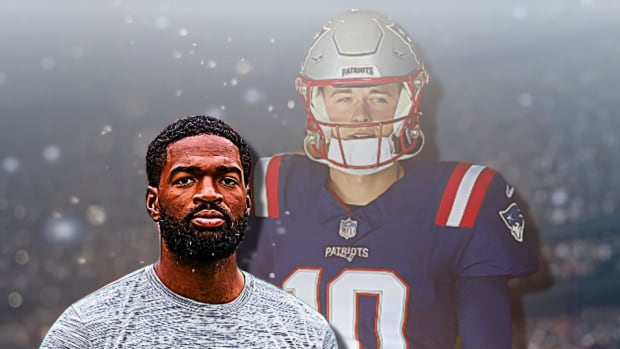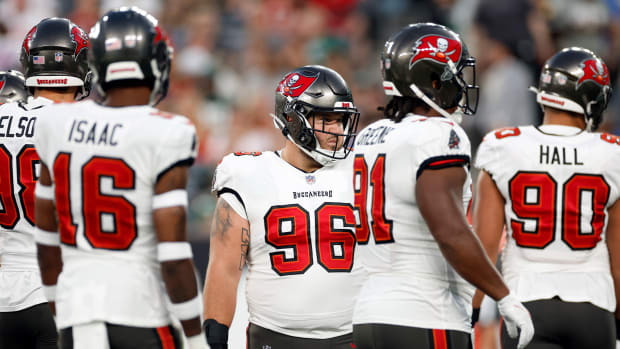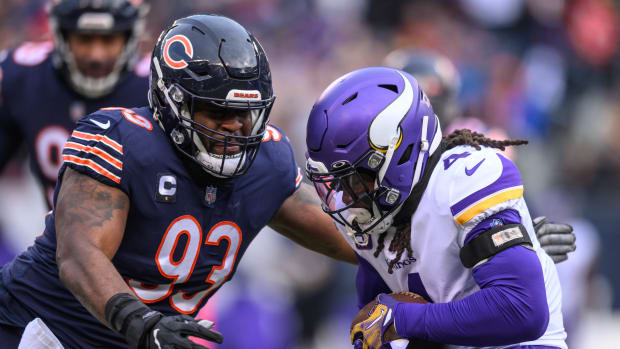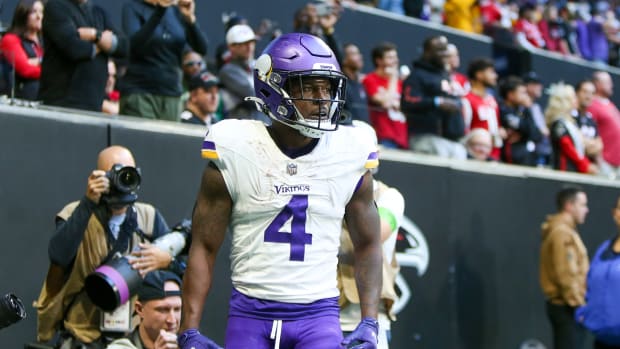Saints looking to return to their roots after disappointing campaign
WHITE SULFUR SPRINGS, W.Va.--Looking back, Saints offensive tackle Zach Strief has reconciled himself to the way his team ended its season a year ago—with a Week 17 win that wasn’t enough to get them to the postseason and left them with a 7–9 record.
He’s almost happy with how things shook out, but his is a strange brand of happy. Maybe he should be bitter, upset that the Panthers pulled out a win and stole the division with a 7-8-1 record. He’s certainly not pleased that his own team, picked by many to make it to the Super Bowl, underperformed. But still, in retrospect and given the circumstances, the season ended the best way it could have.
“It was better off [to miss the playoffs],” Strief says. “If you go, and then you maybe play Arizona with their fourth quarterback and you win, you go, hey, we were this close. And you weren’t.”
• MMQB: A Panthers coach's sobering fight | Training camp tour blog
After the disappointment that was 2014, the Saints have stated one explicit goal this season: to return to their roots. When coach Sean Payton and quarterback Drew Brees took over in 2006, New Orleans was a perennial loser that had just spent its last season displaced after Hurricane Katrina. The team had just two winning seasons in its past 13, and the idea that it might stay permanently in San Antonio after Katrina had been a real possibility. But instead of relocating, owner Tom Benson doubled down, hiring Payton and signing Brees, and the two ushered in the most successful stretch in Saints history. From 2006 to '13, New Orleans amassed an 80–48 record and won a Super Bowl, after the 2009 season.
Coming off brutal losses to end 2014, NFC coaches plot teams' comebacks
Going into 2015, though, only five players remain from that Super Bowl team (Brees, Strief, offensive guard Jahri Evans, receiver Marques Colston and punter Thomas Morstead), and the team has done away with the assumption that its young players know what it takes to win. “There are times where you just take for granted maybe the fact that everybody just knows,” Brees says. “They know what happened at [our first training camps under Payton]; they went through it; they molded because of that experience; they understand the culture; they understand what the signs around the facility mean, and where they came from, and why they are there.
“There are times where you almost just have to sit back and be like, every guy on this team has not heard that speech, that story or that lesson before, so you almost have to kind of rewind and start back over.”
• BEDARD: Brees hopes Saints can turn it around before it's too late for him
Strief agrees. He feels that a year ago, leaders like he and Brees were at times too lax, that they made too many assumptions—which is why Strief, in the early days of camp, was the busybody of the group. There was never a moment when he wasn’t talking to a younger offensive lineman, fussing with his footwork, slowly walking him through a play. “We need to get back to our roots,” the 10-year veteran says. “I think you don’t necessarily say there’s wholesale changes, but you just want to make sure you refocus.”
Seahawks continue big spending with 4-year extension for Bobby Wagner
Still, the changes to the New Orleans roster are anything but subtle. Gone is 2014 defensive captain Junior Galette, who left the Saints in a blaze of obscene Twitter insults after being cut. In addition, the team dealt tight end Jimmy Graham, Brees’s no. 1 target since '11, to Seattle in March, just days after they cut linebacker Curtis Lofton, another captain and team leader. It’s been one major move after another, and the changes have not come without financial hits; currently, the Saints are paying a whopping $27 million in dead money to players on other teams’ rosters. If New Orleans felt like it was pressed up against the salary cap a year ago, things are even tighter today, although Loomis touts the front office’s ability to creatively work around financial constraints. Still, it’s hard for a team to invest in the future when so much of its money is tied up in the past.
Perhaps that’s why the 2006 theme seems apropos. The Saints shun the idea that they need to look forward or prepare for life after Brees—Loomis says he hopes his 36-year-old quarterback will play past 40—and this off-season, they focused more on digging up their past. After the defense allowed 6,144 yards to its 2014 opponents—worse than every team but Atlanta—New Orleans brought back former assistant coach Dennis Allen, who was with the team from 2006 to '10. His title of “defensive assistant” lacks specificity, but Allen’s role seems to be that of a co-defensive coordinator alongside Rob Ryan, who will get another chance to bring about the kind of revival he orchestrated in New Orleans in '13. “I think there are a handful of [ways] we benefit from having [Allen],” Payton says. “But knowing exactly what type of teacher he is, what type of coach he is, it helps me in a decision like that.”
Ranking the NFL's top wide receivers entering the 2015 season
Offensively, too, the Saints know changes are in store. With a beefed-up offensive line (New Orleans received center Max Unger in the Graham trade and drafted tackle Andrus Peat, who’s struggled early in camp) and the addition of running back C.J. Spiller, the team has taken some of the stress off Brees’s arm. Without Graham, who most often functioned as a glorified slot receiver and created mismatches across the field, the Saints will have to adjust their passing game. Even if second-year receiver Brandin Cooks takes a leap forward, he and Colston cannot account for all of Graham’s yardage or his unique style of play.
Still, much remains the same in New Orleans. Brees has declined only slightly since his Super Bowl season, and Payton’s system is essentially the same as the one he brought with him nine years ago. Maybe it’s those constants—Payton and Brees are the league’s fourth-longest tenured coach and quarterback, respectively—that made the subtle changes of a year ago so hard to immediately see. Strief admits he wishes he’d noticed earlier but says it took him until late in the season to realize how shaky things had gotten, both in the locker room and on the field. And even if the Saints were just a game away from .500, they scrutinize last season as if they finished 2–14.
“If we weren’t good enough to win the Super Bowl,” Strief says, “at least we learned something about ourselves.” That something, he hopes, that will push his team to the top of a still-shaky NFC South come January.




































